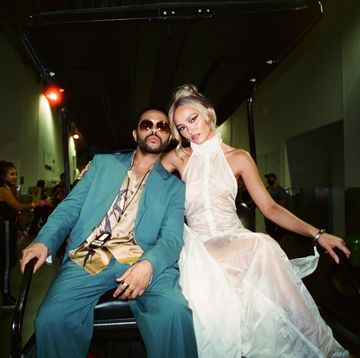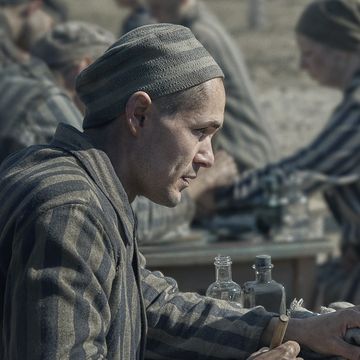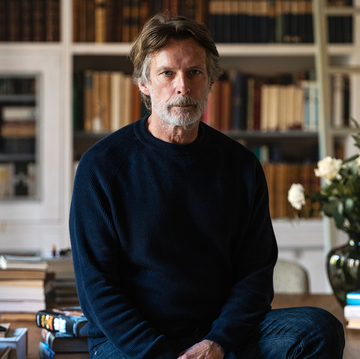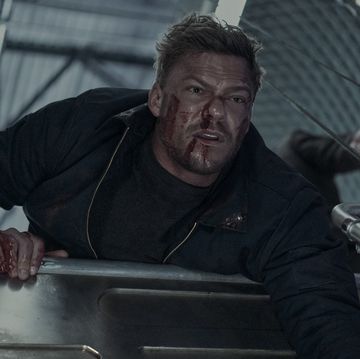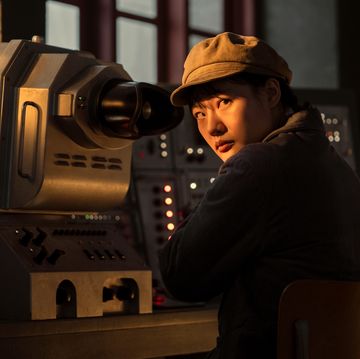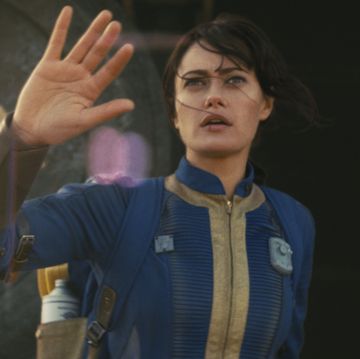In the fourth episode of The Crown’s fifth season, ‘Annus Horribilis’ (named for the 1992 speech in which the Queen mourned a very bad year for her family, overshadowed by divorce, a toe-sucking scandal and a fire at Windsor Castle), the Netflix show dives into its past. Princess Margaret (played by stand-out Lesley Manville) is reflecting on her first loves: music, one must assume cigarettes, and Peter Townsend. The decades-old relationship has been gently stoked once more; Peter heard Margaret on the radio, and would like to meet. She would too. It turns out they both kept each other’s letters. As Margaret ruminates on her seasons-long resentment – lest we forget, the Queen denied that union because Peter was a divorcé – the young Margaret (Vanessa Kirby) lights up the screen. There’s a montage of Kirby in red lipstick, smoking away, careering between impossibly glamorous and impossibly sad. She looks, and acts, like a movie star. Of all the furore that surrounds The Crown, the accusations that Netflix is playing with fire by dramatising the lives of the Windsors, this flashback might be the most dangerous to the show itself: a reminder of just how electrifying it once was.
Instead, this season, which debuts on Netflix on 9 November, is a rather grey affair. We are in the ‘90s, not an extremely stellar time for the royal family. Andrew and Fergie are on the outs; Anne and Mark Phillips have divorced; Charles and Diana are dreaming of one. The Queen (Imelda Staunton, an inarguable casting choice) finds herself, as she has done for four season of this show, both berating her nearest and dearest for embarrassing the institution and apologising to them for its restrictions. (While it’s probably not conducive to personal happiness, there’s something almost admirable about the Queen’s reaction to her children’s relationship woes – “being happily married is a preference rather than a requirement” – and how she sticks to it.) These themes are now as worn as the carpets at Buckingham Palace; the relevance of the monarchy, the public’s love-hate relationship with the royals. The show, like the Windsors in the ‘90s, is stuck in a rut.
Unlike that other throne-centric franchise, Game of Thrones and its follow-up House of the Dragon, The Crown has become even more expansive in its old age, hoping to encapsulate an expanding royal family and the many, many hangers-on. In this season’s opening episodes, we meet Countess Mountbatten (Natasha McElhone), who is mourning the loss of her daughter, though that storyline somehow evolves as a way for Prince Philip (Jonathan Pryce) to embark on a DIY project. Even the most ardent of monarchists may struggle to find that compelling.
A later episode about the Al-Fayed family – which covers Mohamed’s establishment-baiting purchase of the Ritz and Harrods and Dodi’s venture into film production – has some things to say about new money and the upper classes (mostly that the latter needs the former). Later episodes are set to deal with Martin Bashir’s Diana interview, “tampongate”, as well as the changing political scene (Jonny Lee Miller plays John Major, while Bertie Carvel takes on his successor Tony Blair). Peter Morgan’s writing is dependable as ever, but it’s a lot of plot to muddle through, and while some episodes tie themes together neatly, others are less finely structured. They all feel exhausting.
The closest the show comes to fun is, inevitably, Diana. Elizabeth Debicki, very tall, very blonde, brings some much-needed ambiguity to the role, lacking in Season 4’s doe-eyed, naïve version of the princess. She agrees to cooperate with Andrew Morton on an explosive, tell-all biography, which takes very little convincing. She takes Vogue (“the classics”) to bed for reading. She’s compelling, she’s cunning, she’s trapped.
Inevitably, as we edge closer to her death in 1997, the misery switches up a gear. The very lonely Diana starts to suspect, and she’s often right, that people are spying on her; Debicki skilfully imbues the princess’ charm with some paranoia. A retread of her interview with Bashir is intriguing, given the recent revelations about how that scoop was secured, though watching this doomed woman be manipulated once more isn’t exactly. Given the hunger for all things Diana, that likely won’t put anyone off. Dominic West equips himself well as Prince Charles, mostly hanging out with Camilla and hung up on the public’s perception of him. He also gets one of the show’s funnier lines, pointing out the family’s dysfunction to his mother: “If we were an ordinary family and social services came to visit, they would have thrown us into care and you into jail.” And though the Wales’ marriage is this season’s heat score, the hysteria isn’t warranted; the show neither condemns nor heroises either royal.
Throughout it all, you have to wonder: what is The Crown trying to achieve? This season is hampered by its reverence to the royals; too cumbersome to provide much insight into the family, and not bold enough to be a thrill ride. People will tune in to watch Britain’s finest actors at work, to see Diana’s revenge dress in action. They’ll watch because they’ve seen four seasons, and you might as well stick it out to the end. But whether or not they’ll find any of it a good time is a different question. The royals, for all their recent attempts at relatability, can still provide a moment of fantasy. Perhaps a series about them should too.
‘The Crown’ Season 5 streams on Netflix on 9 November
Henry Wong is a senior culture writer at Esquire, working across digital and print. He covers film, television, books, and art for the magazine, and also writes profiles.





